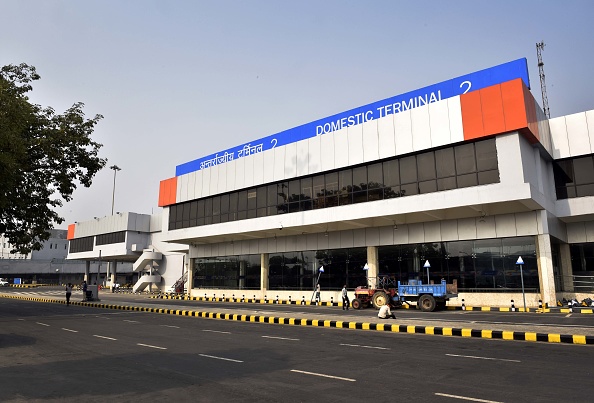
Delhi's Indira Gandhi International Airport Terminal 2
The Delhi airport achieved a significant milestone with the operationalization of its fourth runway and dual Eastern Cross Taxiways (ECT) on Friday.
This development is expected to greatly enhance the capacity and operational efficiency of the country’s largest airport. With an estimated annual passenger handling capacity of 109 million in the near future, Delhi airport is poised for growth.
The inauguration ceremony of the fourth runway and ECT was led by Civil Aviation Minister Jyotiraditya Scindia, who expressed that the civil aviation sector in the country is at an inflection point, marking the beginning of a new phase of growth.
Indira Gandhi International Airport (IGIA) becomes the first airport in India to boast four runways and ECT, accommodating approximately 1,500 aircraft movements each day.
The completion of the fourth runway, alongside an upcoming terminal expansion, will significantly augment Delhi airport’s passenger handling capacity to 109 million per annum. Presently, the airport has a capacity of 70 million passengers annually. Scindia emphasized that Delhi airport’s capabilities will surpass even Atlanta airport.
The addition of the fourth runway will enable the airport to accommodate more flights, increasing the capacity throughput from the current level of 1,400 to 1,500 aircraft movements to nearly 2,000, as highlighted by Scindia during the inauguration.
Air travel demand is witnessing an upward trajectory, with domestic air passenger traffic experiencing a nearly 19% year-on-year growth in June, reaching around 125 million.
The operationalization of the ECT will lead to a reduction in taxiing time for aircraft, from approximately 20 minutes to 10-12 minutes, according to Scindia. Notably, planes will taxi on the ECT while vehicles will continue to move on the road below.
Scindia further mentioned that the ECT can facilitate the simultaneous taxiing of two wide-body planes like the A380 and B777.
To commemorate the operationalization of the fourth runway, a ceremonial water cannon salute was accorded to an Air India plane (Flight AI 821) as it departed from Delhi to Srinagar.
Delhi International Airport Ltd (DIAL), a consortium led by GMR Airports Infrastructure Ltd, manages IGIA. GMR Group Chairman GM Rao stated that IGIA, serving around 70 million people annually, is the largest airport in India. The fourth runway and ECT will bolster capacity and operational efficiency, he added.
IGIA currently comprises three terminals (T1, T2, and T3) and four runways (RW 09/27, RW 11R/29L, RW 10/28, and RW 11L/29R). It was announced that the third runway (RW 11R/29L) would undergo maintenance work following the operationalization of the fourth runway.
Scindia revealed that the GMR Group’s next challenge is to ensure the operational readiness of the fourth terminal by October, ahead of the rush season. Efforts are underway to create an international hub between T1, T2, T3, and T4, enabling seamless travel with minimal connect time between domestic and international flights. Delhi aims to reclaim its pole position as an international hub, with the potential for similar developments in other airports.
The ECT, spanning 2.1 kilometers and accommodating wide-body aircraft, will reduce the time passengers spend on the tarmac after landing and before take-off. By connecting the northern and southern airfields on the eastern side of the airport, the ECT will shorten the taxiing distance for aircraft by seven kilometers. The distance from landing on the third runway to reaching Terminal 1 (T1) will reduce from nine to two kilometers.
The dual-lane ECT has a width of 44 meters for each lane, with a 47-meter gap between them, allowing for the simultaneous passage of two aircraft.
DIAL estimates that the ECT will save approximately 350 kilograms of fuel per aircraft movement between RW 29R and Terminal 1, resulting in a reduction of approximately 1,114 kilograms of CO2 emissions. On an annual basis, the ECT is projected to reduce emissions by around 55,000 tonnes of CO2 from aircraft.
Around 9,175 metric tons of fly ash were utilized for the construction of the ECT.
Scindia highlighted the growth of India’s civil aviation sector over the past nine years, with the fleet capacity of domestic airlines expanding from 400 to 720 planes, passenger handling capacity rising from 6 crore to 14.5 crore, and the number of airports doubling to 148. Furthermore, the minister expressed that the total number of airports, heliports, and waterdromes will increase to 220, with Air India and IndiGo having placed orders for 970 planes collectively.
Scindia concluded by stating that India is currently at an inflection point in its civil aviation history, entering a phase of growth. With the incoming plane orders and capacity expansions by Air India, IndiGo, and new airlines such as Akasa Air, it is anticipated that India’s fleet size will reach 1,500 planes in the near future. Additionally, the annual passenger handling capacity of airports is projected to rise to nearly 42 crore by 2030, up from the current level of 14.5 crore.
(With PTI inputs)
The handset features a dual rear cameras, 6.72-inch 144Hz display, IP64 water resistance, and up…
Delhi Police raided a late-night illegal bar in Samaypur Badli, detaining 25 people and seizing…
A rear-end crash near Delhi Haat triggered a blaze that gutted both vehicles, though no…
Court grants probe agency more time as NIA pursues wider links in Red Fort blast…
Featuring works in thread, fabric, performance and digital media, Ski(e)n examines the body as a…
Govt report shows gains in maternal health, with better care access and fewer anaemia cases…